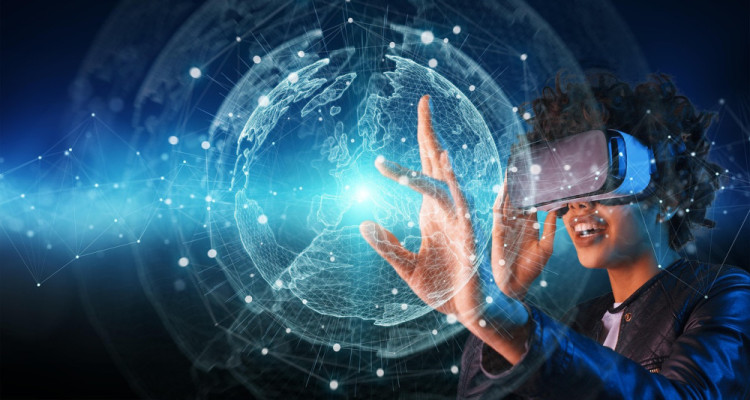Profitez d'invitations gratuites et de rabais exceptionnels!
Vous êtes un passionné de spectacles...
Vous aimez faire découvrir à votre entourage des nouveautés ou des artistes...
Profitez d'invitations gratuites et de rabais exceptionnels!
Vous êtes un passionné de spectacles...
Vous aimez faire découvrir à votre entourage des nouveautés ou des artistes...
Inscrivez-vous maintenant, c'est gratuit!

In recent years, technology has dramatically changed how we engage with the world of art and culture. From interactive theater performances to digital art installations that blur the lines between virtual and physical spaces, immersive art experiences have become a key cultural trend. With innovations in virtual reality (VR), augmented reality (AR), and artificial intelligence (AI), artists are crafting experiences that are more engaging and participatory than ever before. These technological advancements invite audiences to step into artworks, interact with them, and, in some cases, even influence their direction. The result is a new form of cultural engagement that empowers the viewer to become an active participant in the creative process.
One example of this shift can be seen in immersive art exhibits like the "Van Gogh: The Immersive Experience," which uses digital projections and soundscapes to bring the artist’s iconic works to life. Visitors are not merely passive observers, they are enveloped in the artwork, surrounded by dynamic, moving visuals that mimic Van Gogh's brushstrokes and iconic scenes. This blending of digital technology with traditional art allows a deeper emotional connection to the work, making the experience not just visual but also auditory and kinetic.
These exhibitions represent the future of culture, where art is no longer confined to galleries and museums but instead comes to life in entirely new ways. Whether it’s through VR headsets that transport viewers into the world of an artist or AR apps that allow them to interact with 3D models of sculptures, immersive art allows for more personalized and engaging experiences.
As people seek novel ways to engage with art, entertainment industries are also jumping on board. The world of gaming, for instance, has embraced similar innovations. Gamers have always been at the forefront of interactive experiences, but with technologies like VR and AI, the lines between games, films, and live entertainment are increasingly blurred. VR games can now offer experiences so lifelike that players feel they are actually inhabiting virtual worlds. And this trend has opened the door for the intersection of gaming and traditional forms of entertainment. For instance, the rise of real money games in Canada and beyond has also embraced immersive technologies, allowing players to engage in interactive games and live-streamed dealer experiences, much like a real gaming room. If you're interested in exploring new entertainment options, you can even get a $100 free chip no deposit in Canada. This adds a unique element to the gaming culture, combining the thrill of technology with traditional forms of leisure.
The influence of technology in immersive art isn’t confined solely to the art world. Digital media platforms and interactive theater companies are rethinking traditional performance spaces. Productions like “Sleep No More” in New York have revolutionized theater by using immersive environments where the audience can move through the narrative, choosing their own path and interacting with the performers. This type of theater blurs the lines between audience and actor, creating a personalized experience that traditional plays simply cannot offer.
One of the most exciting areas where immersive technology is transforming culture is in the realm of design. Architects and interior designers are exploring how VR and AR can change the way we experience spaces. Virtual walk-throughs of future buildings allow clients to experience the architecture before the first brick is laid. Similarly, AR apps enable users to view how different design elements, such as furniture, wall colors, and decor, would look in their own homes before making a purchase. This technology enhances the creative process, offering new opportunities for designers to engage with clients and showcase their work in immersive ways.
Immersive experiences also have the potential to make art and culture more accessible. Virtual exhibitions and online cultural events are reaching a global audience, allowing people from all walks of life and corners of the world to experience culture without having to leave their homes. This is particularly important in a world still affected by travel restrictions and the digital divide.
Furthermore, the future of immersive art and culture is not limited to just technology-driven experiences. It’s about creating spaces and moments that allow for greater collaboration between artists, performers, and the audience. In fact, many immersive art forms promote social interactions, with audience members invited to share their thoughts and feelings, and even alter the outcome of the experience. This participatory aspect elevates the cultural experience, making it more inclusive and engaging.
Looking ahead, the possibilities seem endless. As AI and machine learning continue to develop, we can expect even more advanced and personalized art experiences. Imagine an art exhibition where the artwork changes depending on your mood, or a concert where the music is shaped by your interactions. The future is exciting, and as technology continues to evolve, it’s clear that the way we consume and engage with culture will only become more interactive and immersive.
In conclusion, the intersection of technology and culture is ushering in a new era of artistic expression. Whether through VR, AR, or AI, immersive art experiences are giving audiences a chance to not only view art but to live it. The blending of traditional forms of entertainment with cutting-edge technology offers a glimpse into the future of cultural engagement, one that is interactive, inclusive, and endlessly creative. As these experiences evolve, they have the potential to transform the cultural landscape and offer deeper connections between art, artist, and audience.


